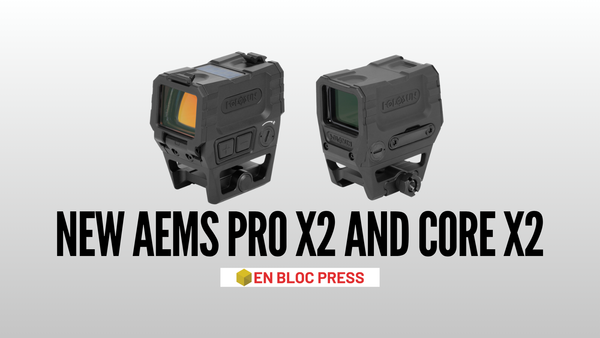Review: Baofeng AR-152 10-Watt Tactical Radio - Issue #3 of 2024
The subscriber-first review of the Baofeng AR-152 handheld tactical radio
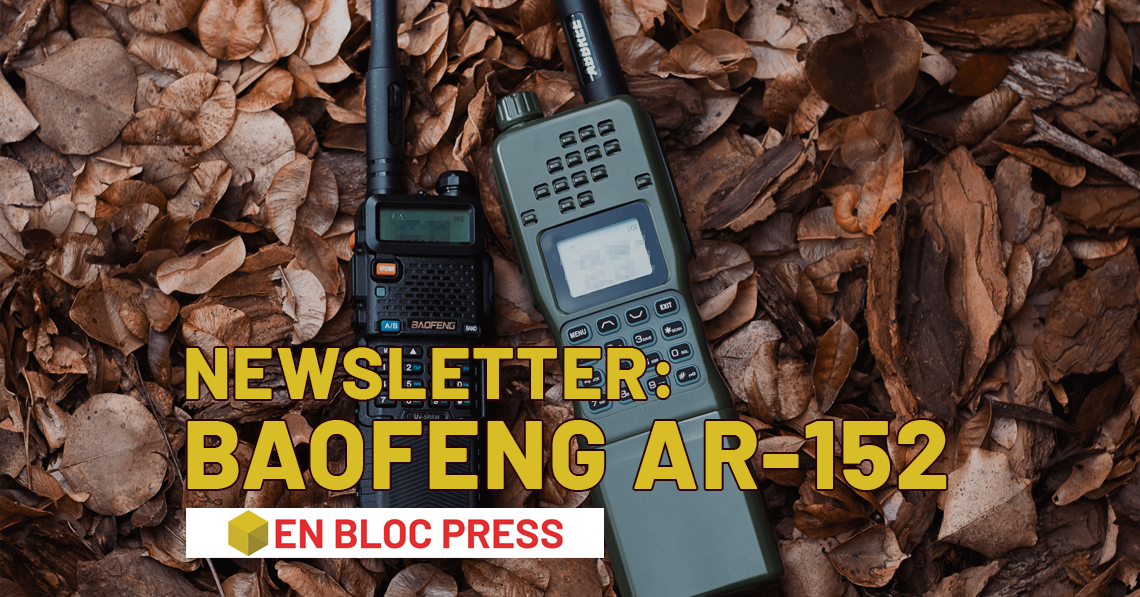
Note: this post is pretty image-heavy, so it's probably best viewed on the web in case it's too large to load in your inbox.
Baofeng Radios
Baofeng handheld radios have gained quite a bit of attention over the years. As we wade through an era of extreme political polarization, COVID lockdowns, race riots, inflation, and natural disasters, more and more people – and particularly gun owners – have taken an interest in contingencies for food, medicine, and communication.
There are plenty of reasons to concern oneself with radio communication. Cellular data networks can become unreliable in the wake of natural disasters, terror attacks, or mass civil unrest. In a 'without rule of law' (WROL) situation, it's a good idea to have some semblance of self-reliance when 911 is off the menu. Handheld radios afford families and friend groups a way to communicate in these scenarios.
And so Baofeng radios, with their low price point, ease of use, and a large selection of aftermarket accessories, have become ubiquitous in the tactical community. These radios are somewhat controversial – they're cheap and Chinese, and so the commo purists tend to view them as amateur gear to be sneered at – but I am pro-Baofeng for the simple reason that they allow the layperson a cheap, easy, and attainable means of communicating. And, as we've seen in the last twenty years of Empire, having the fanciest radios doesn't necessarily win wars.
Are there shortcomings to these radios? Sure. Baofeng radios don't offer built-in digital encryption, and they aren't waterproof or as shock-resistant as military radios. But they do enable regular people to communicate easily and cheaply, and they do hold up to abuse pretty well. There is tremendous utility in the Baofeng series of handhelds, and if you aren't a "radio snob," they do the job just fine.
The Baofeng AR-152
Compared to other offerings from the manufacturer, the AR-152 is a physically bigger and more powerful model. Other popular Baofeng models are smaller (think walkie-talkie size) but lack the extra power of the 10-watt AR-152.
Popular Models:
| Model | Wattage | Average Cost |
|---|---|---|
| Baofeng AR-152 | 10W | $70 each |
| Baofeng UV-5R 3800 | 8W | $55 (2-pack) |
| Baofeng UV-9R Pro | 8W | $30 each |
Like most other radios in this style, the AR-152 transmits and receives on the VHF (136-174mHz) and UHF (400-470mHz) spectrums and can also receive standard FM radio stations. It has 128 channels.
In addition to being larger and more powerful than other Baofeng radios, the AR-152 is also more expensive. The Baofeng-152 is basically a Chinese knockoff of the L3Harris AN/PRC-152 military radio. And while a Harris radio will set you back a pretty penny, the Baofeng ships for ~$70 from Amazon.
There are more expensive AR-152 kits that ship with extra pouches, batteries, or accessories, but for the simple radio, antenna, and battery, it's currently $70. I don't have any affiliate links to offer you, but if you buy from Amazon, make sure it's from a Prime vendor with a lot of reviews, etc., to avoid the gray market.

Baofeng AR-152 Unboxing
The AR-152 ships with everything you need to get going. It comes in a cardboard box with the radio, one (1) battery, a 10" antenna, a paper manual, and a wall charger. The battery can charge via a 2.5mm USB charger, too, but you'd need to buy a separate charging cable, which is ~$15.
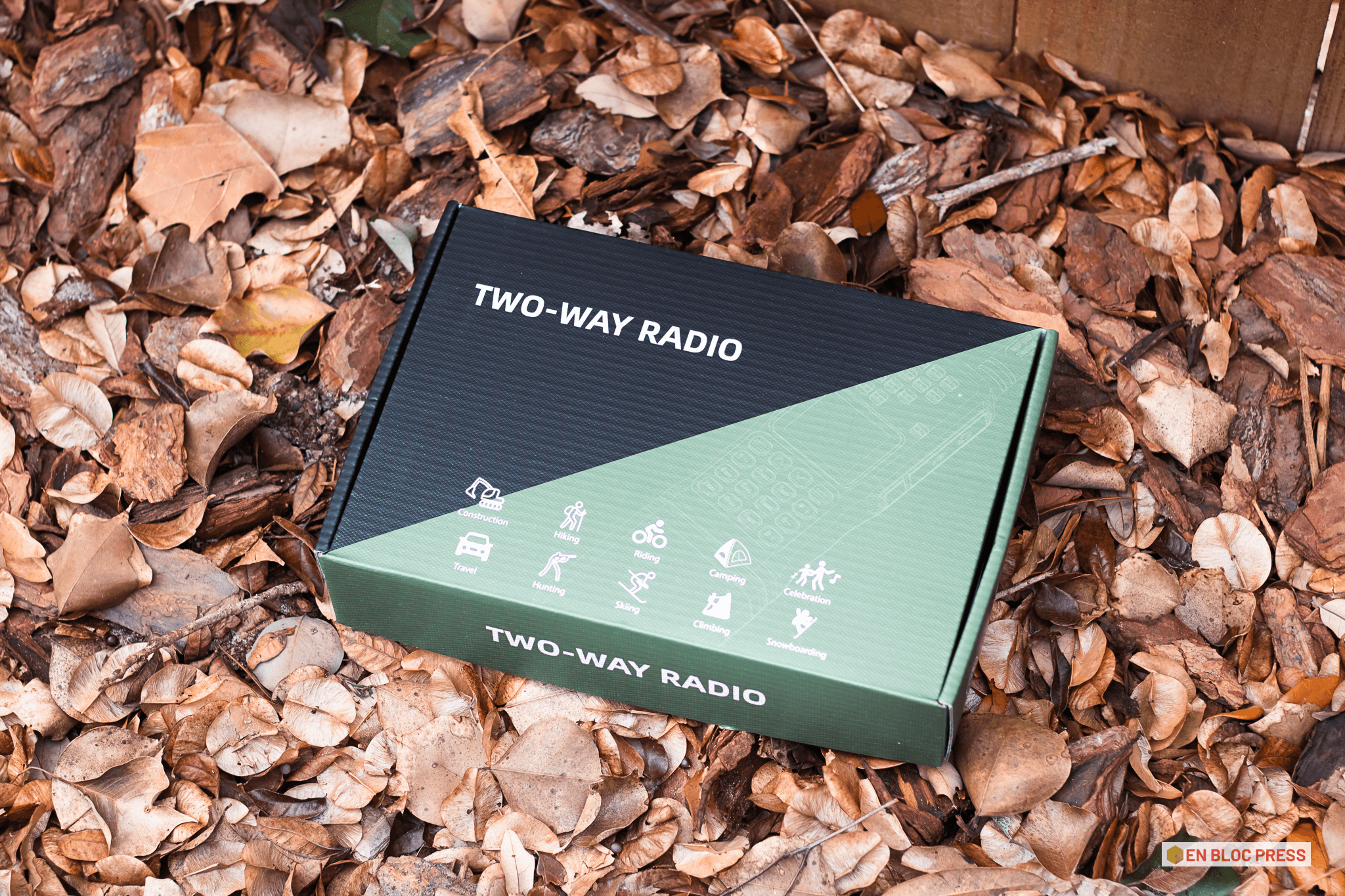
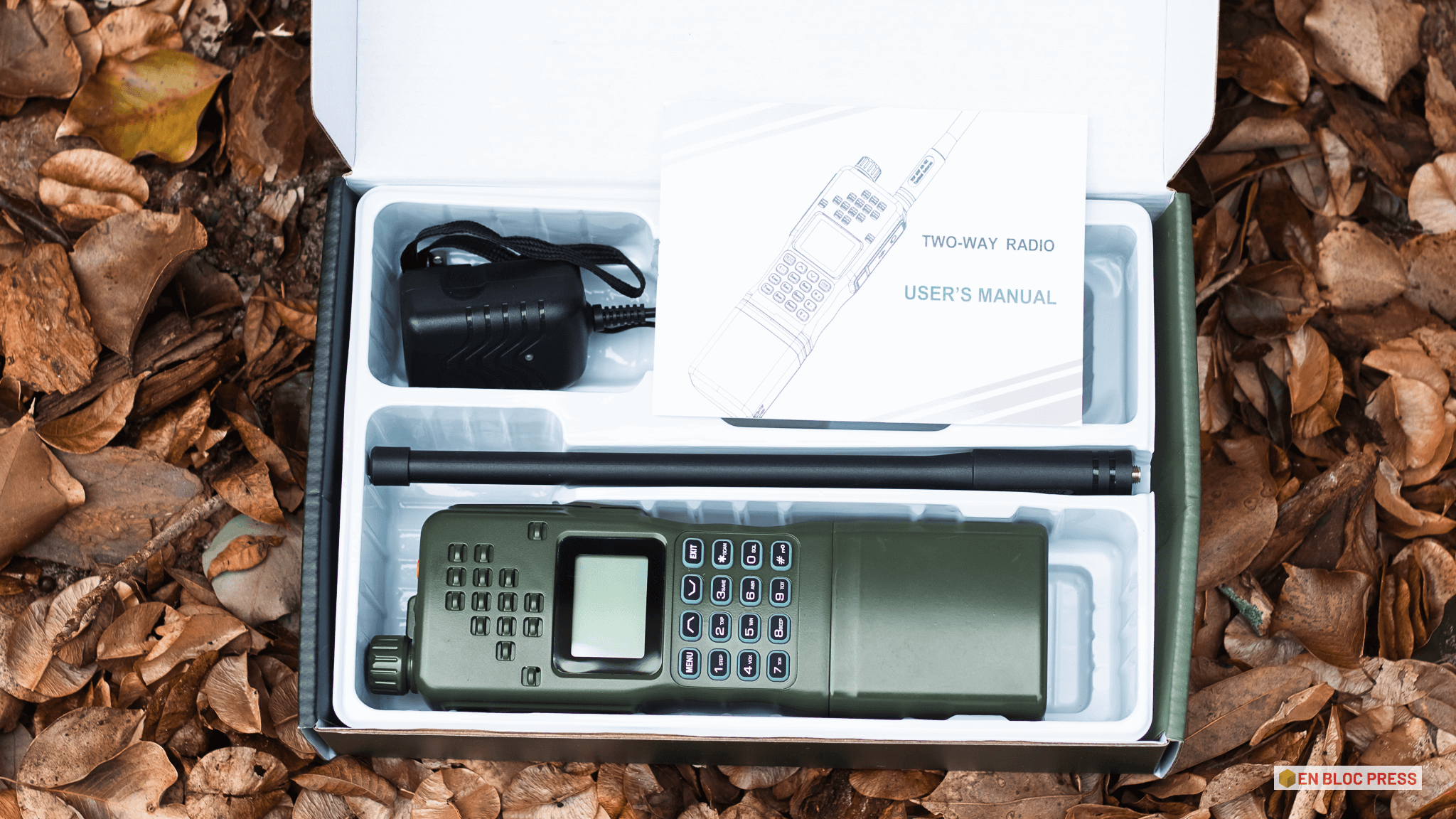
Baofeng AR-152 packaging and contents
Baofeng AR-152 Construction
The radio feels well-built, especially compared to the cheaper UV-5R radio, which is also popular. On top, you'll find a volume knob, light, and antenna port. On the left side of the radio is the push-to-talk (PTT) button. On the right are jacks for headphones and external mics. There are plenty of accessories available to adapt the Kenwood-style/2-pin port for tactical headsets or handset microphones.
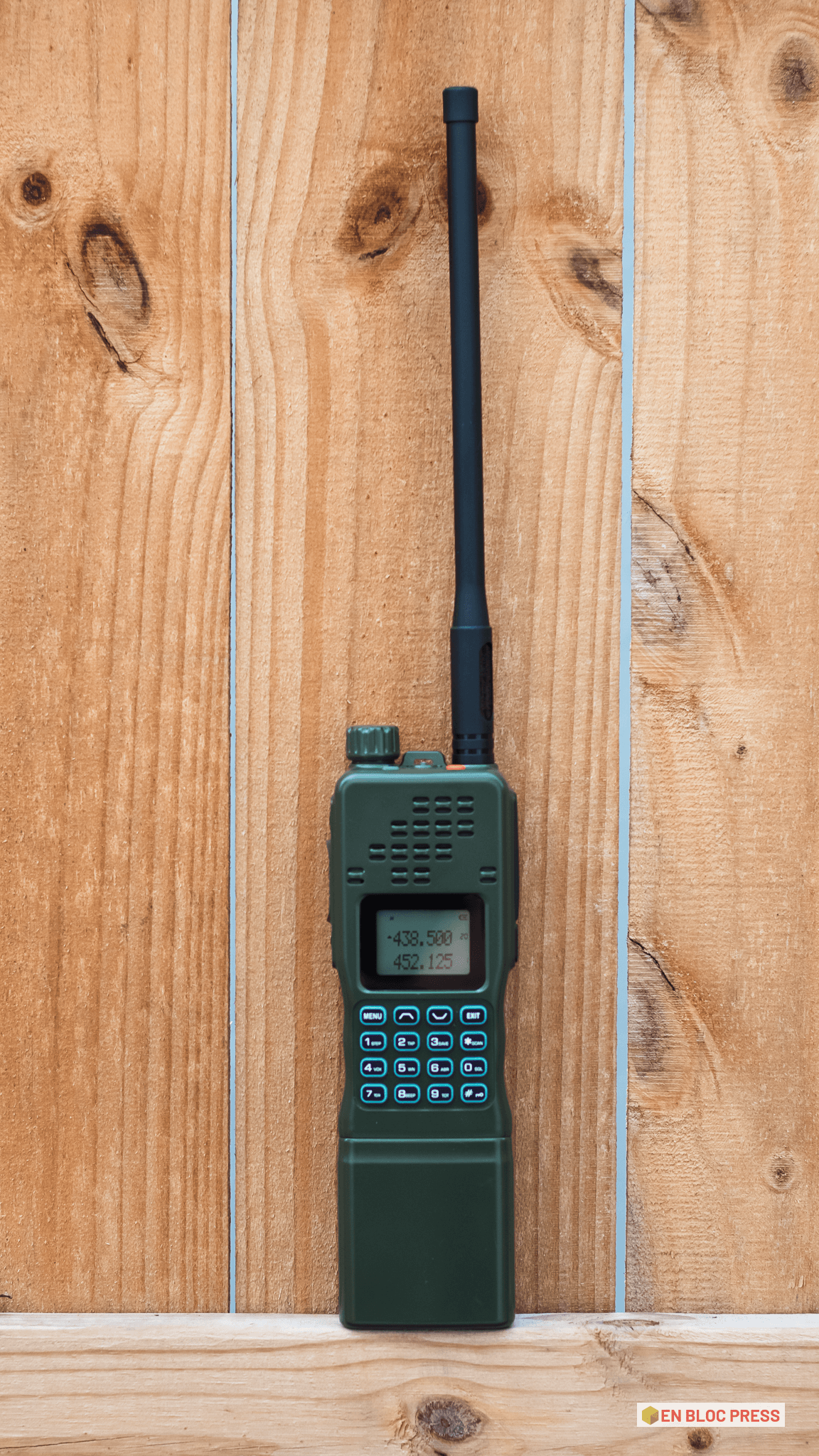
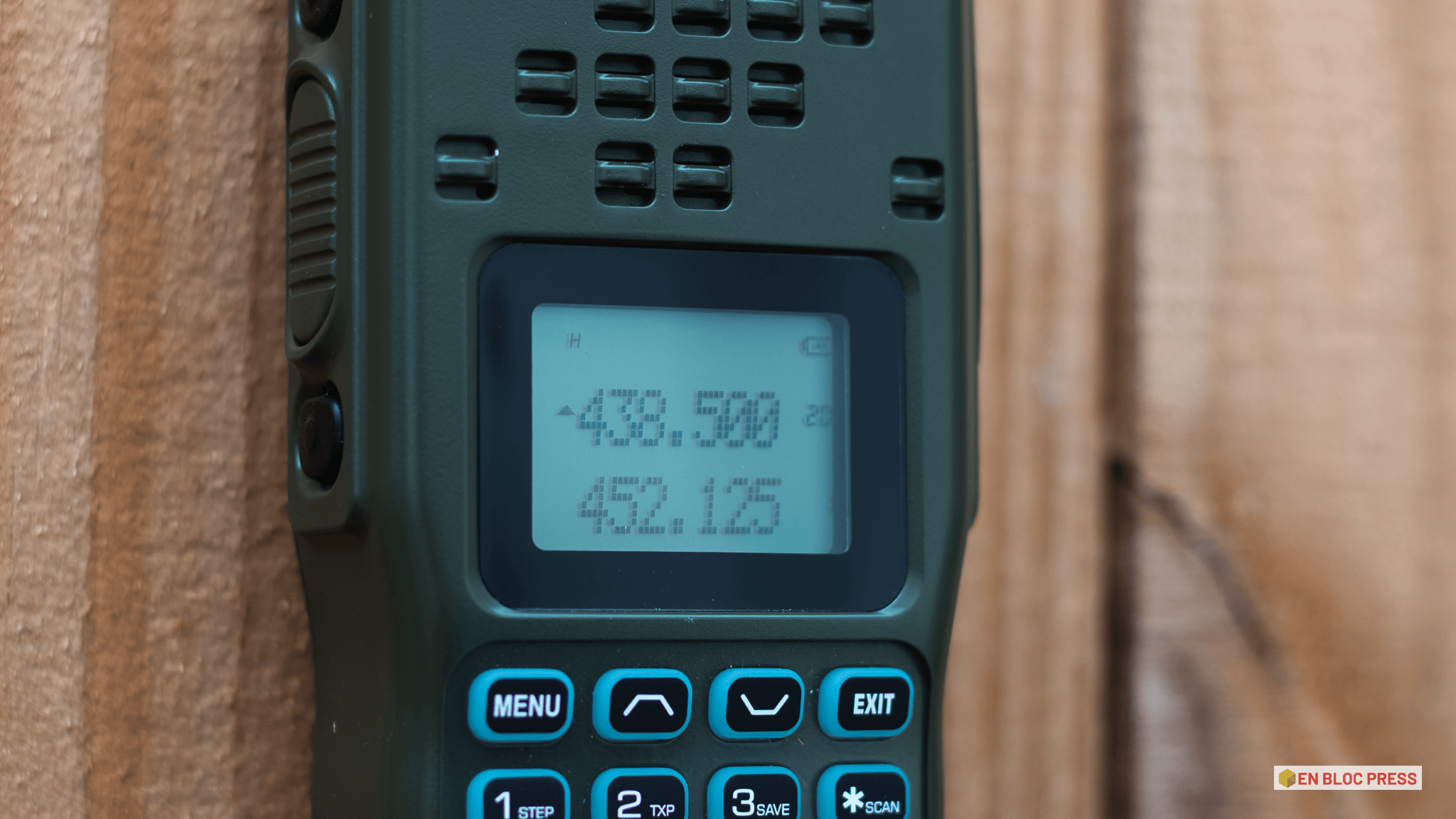
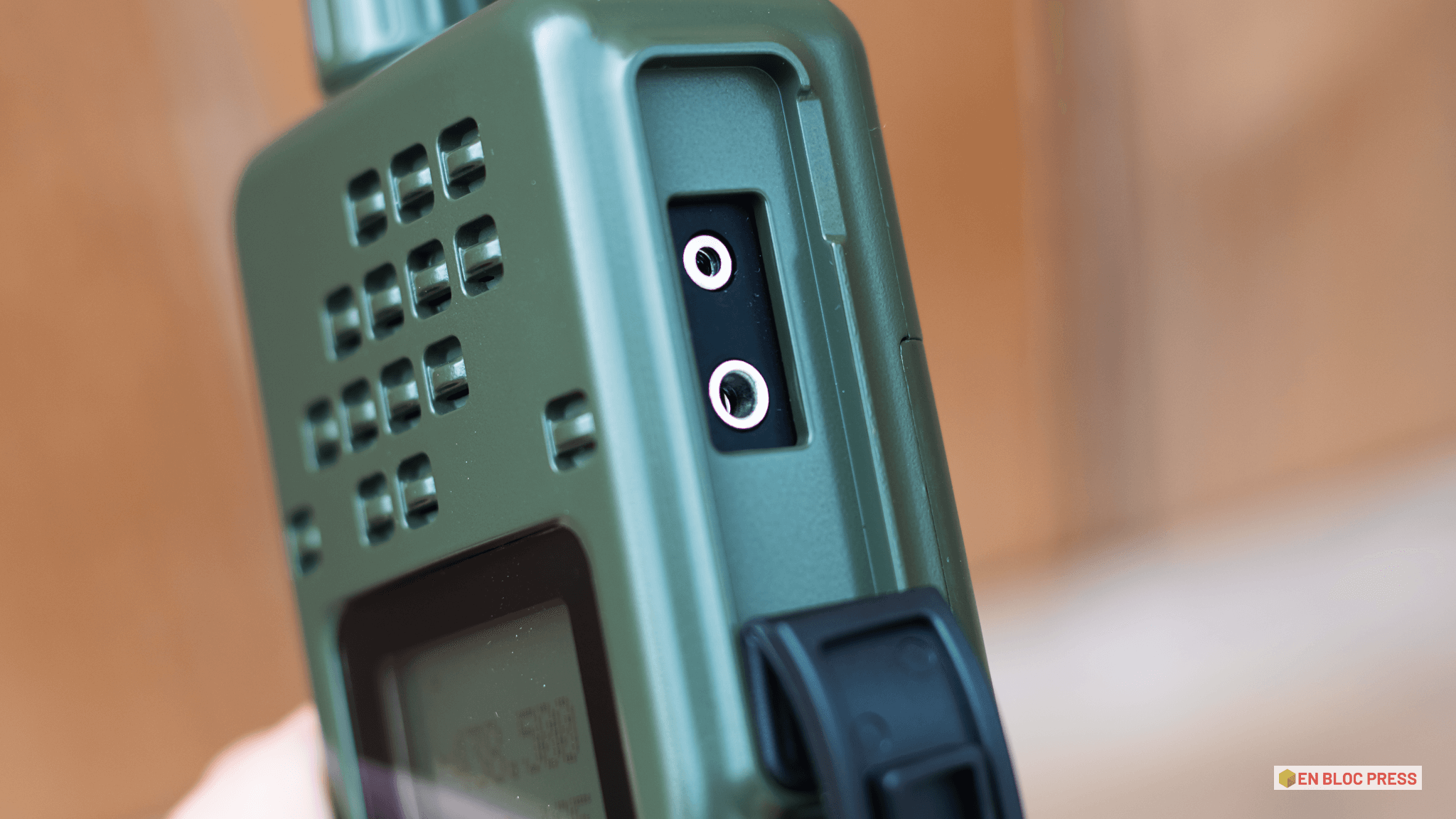

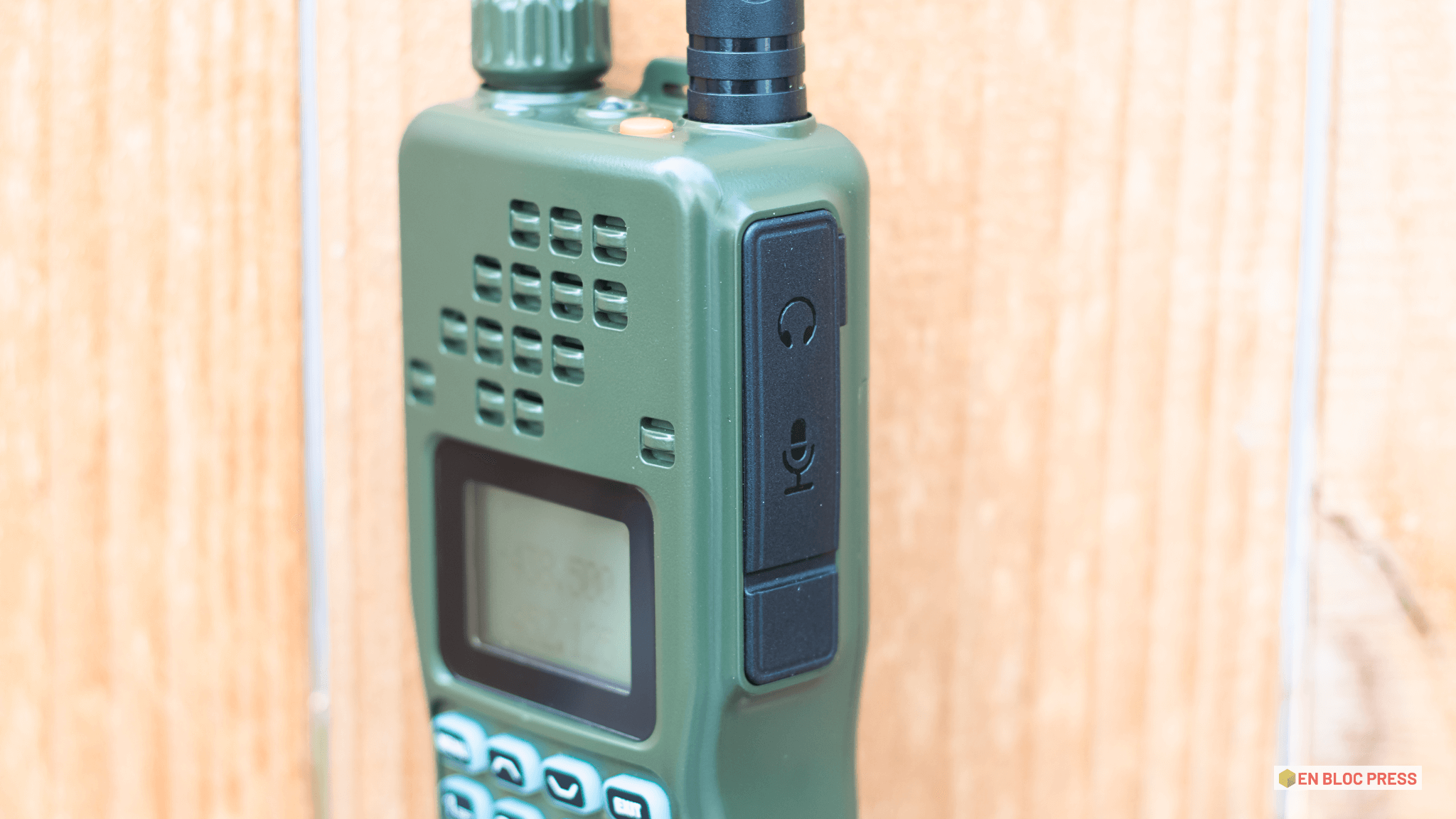
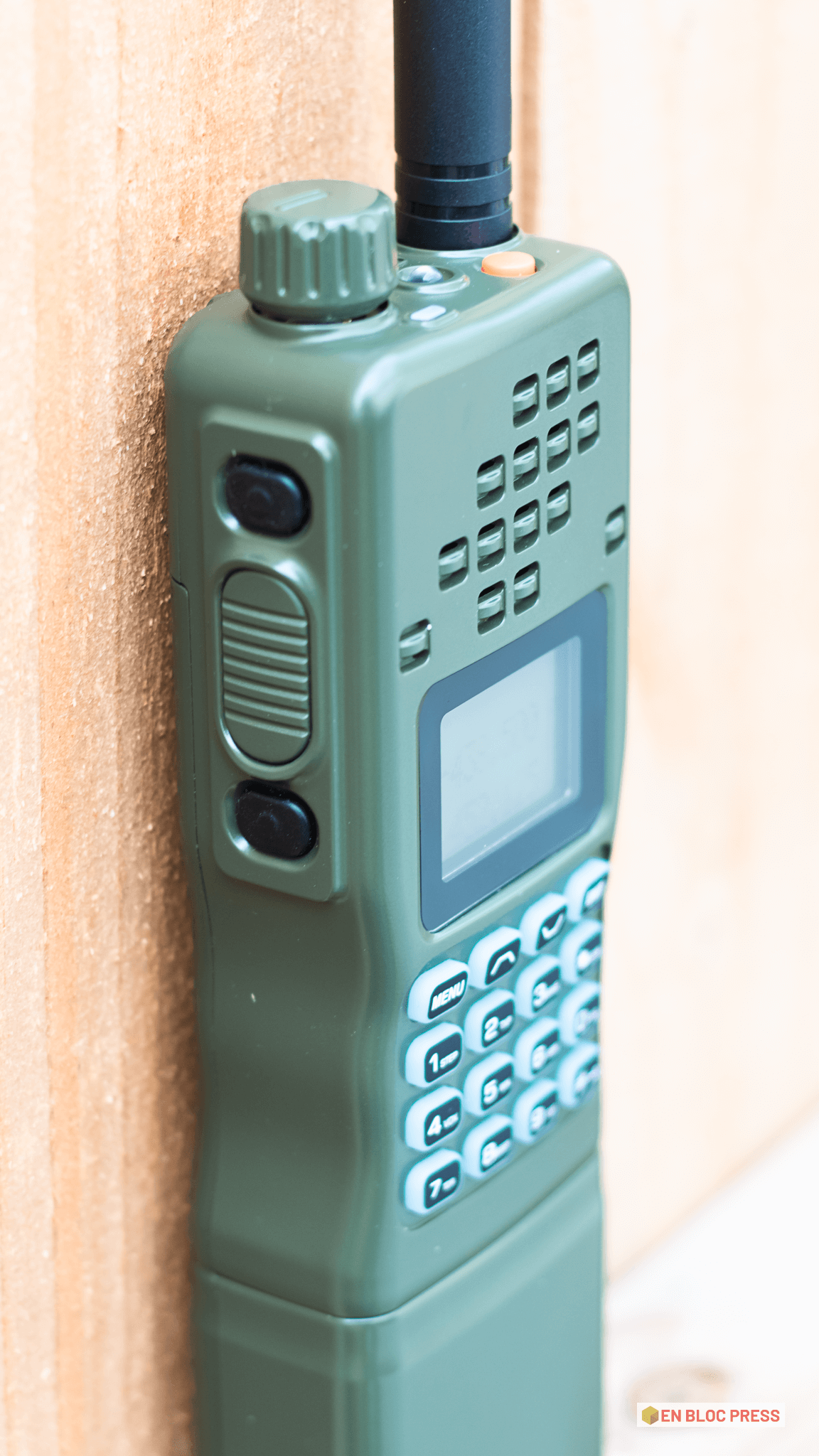

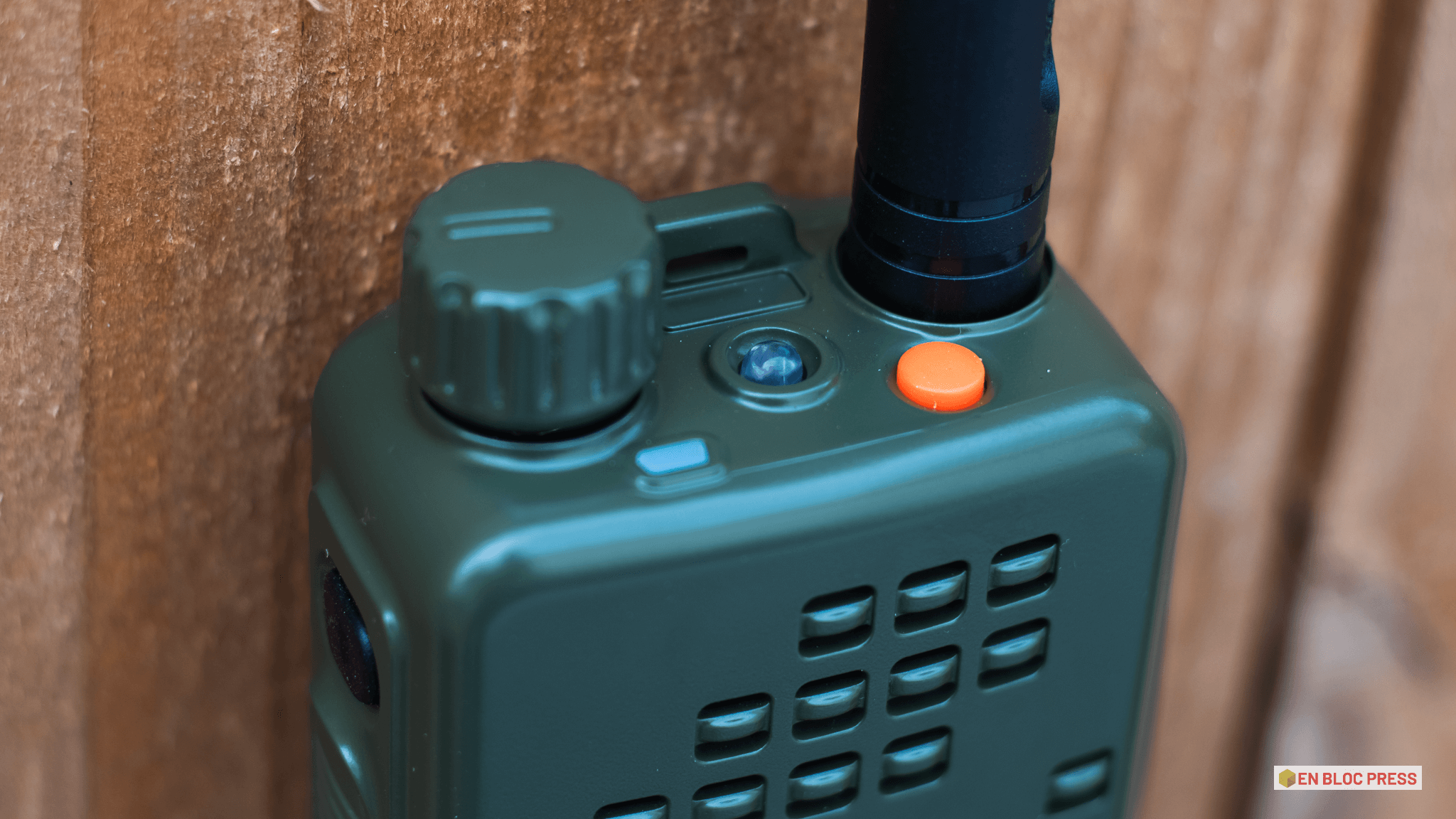
The AR-152 feels chunky and well-built
The faceplate is bright and easy to read. The buttons are less crowded than on smaller radios and are easier to manipulate than the ones on a UV-5R. The keypad would be better for someone in gloves than smaller radios.
The menu settings are basically the same as other Baofeng radios. You can easily scroll through and adjust your transmit power, audio preferences, display preferences, and more.
Like other Baofengs, the AR-152 is computer programmable via CHIRP cable. I haven't done this, personally, but it's a popular option.
The radio doesn't come with a clip (unlike most smaller radios), but it's probably too big for something like that, anyway.
Baofeng BL-152 12,000 mAh Battery


The 12,000 mAh battery offers longer battery life and is wall or USB-chargeable
The AR-152 has a nice metal frame in which the battery is mounted. The battery is substantially larger than the 3,800 mAh battery of the 8-watt UV-5R. Overall, the construction of the frame and battery pack is much heftier and stronger feeling on the AR-152 than other, smaller Baofengs. My 5-year-old son has been using it to play army in the back yard for a few weeks now, and it hasn't broken, so that's pretty durable.
The FCC's paperwork for the AR-152 says the radio uses a 7.4V input from battery power and a 10V input while on the charger. So, this radio is a 10-watt radio, but it seems to output around 6-7 watts at the antenna in testing videos. (Related image below)
Be aware: there are some third-party vendors that claim the AR-152 is a 15-watt radio. It is not.

Antenna
The stock antenna isn't the best, and as with most stock antennas, it should be upgraded. I've been able to get a better range with the Abbree 42" folding antenna. My area is a medium urban neighborhood that's dense with oak and pine trees, and pine trees are particularly bad for line-of-sight radio communication. Running at high power and with the Abbree antenna, I'm able to reach about 1.25 kilometers without becoming broken-unreadable. The Abbree antenna also looks cooler, which is of vital importance. (It's like $13.)
Your radio will not have any specific range per se because the range is decided by a number of variables, and there's no universal answer. But the 10-watt AR-152 definitely transmits further than the 8-watt UV-5R models.

Baofeng AR-152 with Abbree 42.5" folding antenna
Size Comparisons
Here are some shots of the AR-152 (bigger) next to the UV-5R (smaller) so that you can get an idea of how they compare.
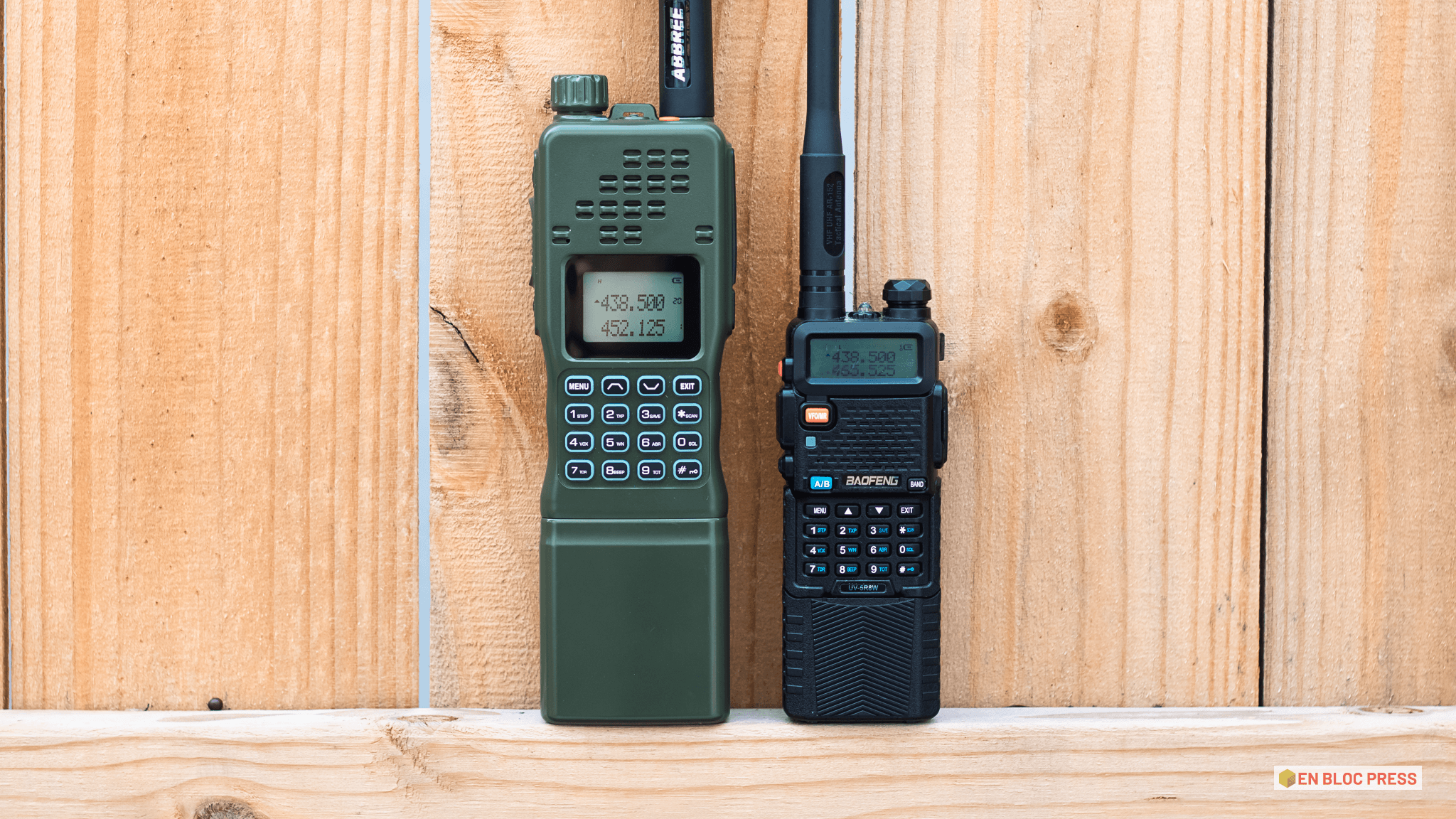
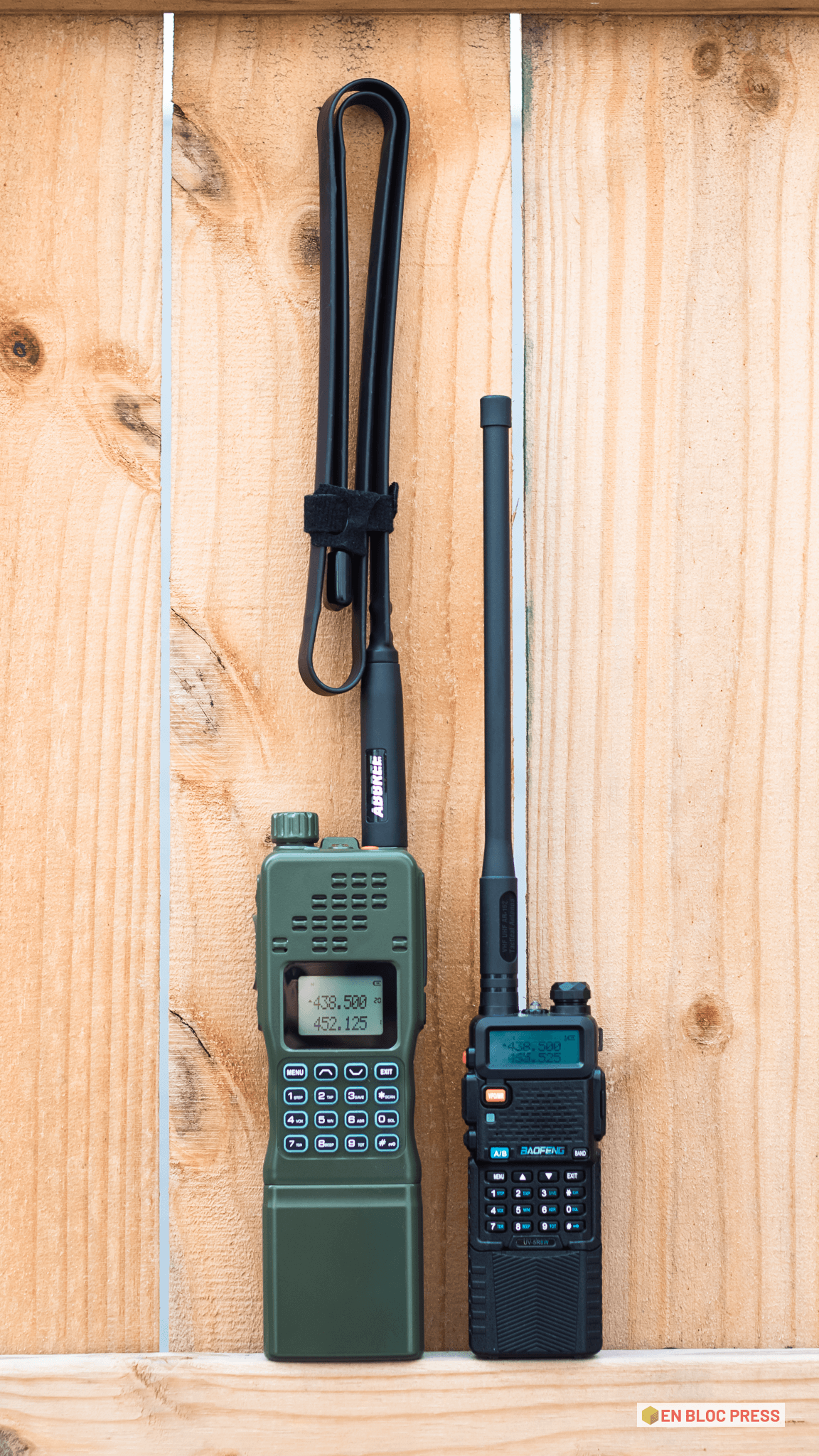
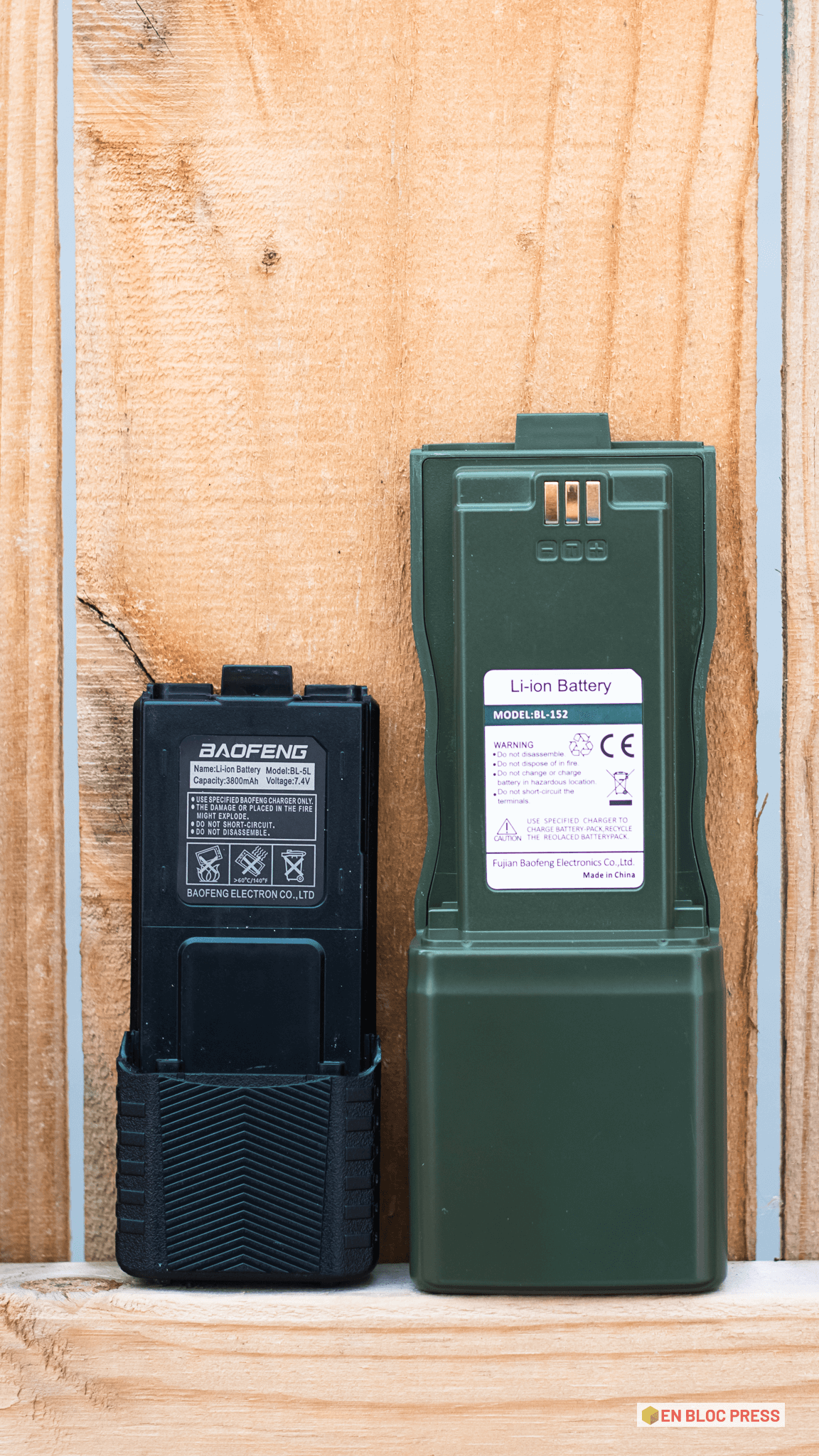
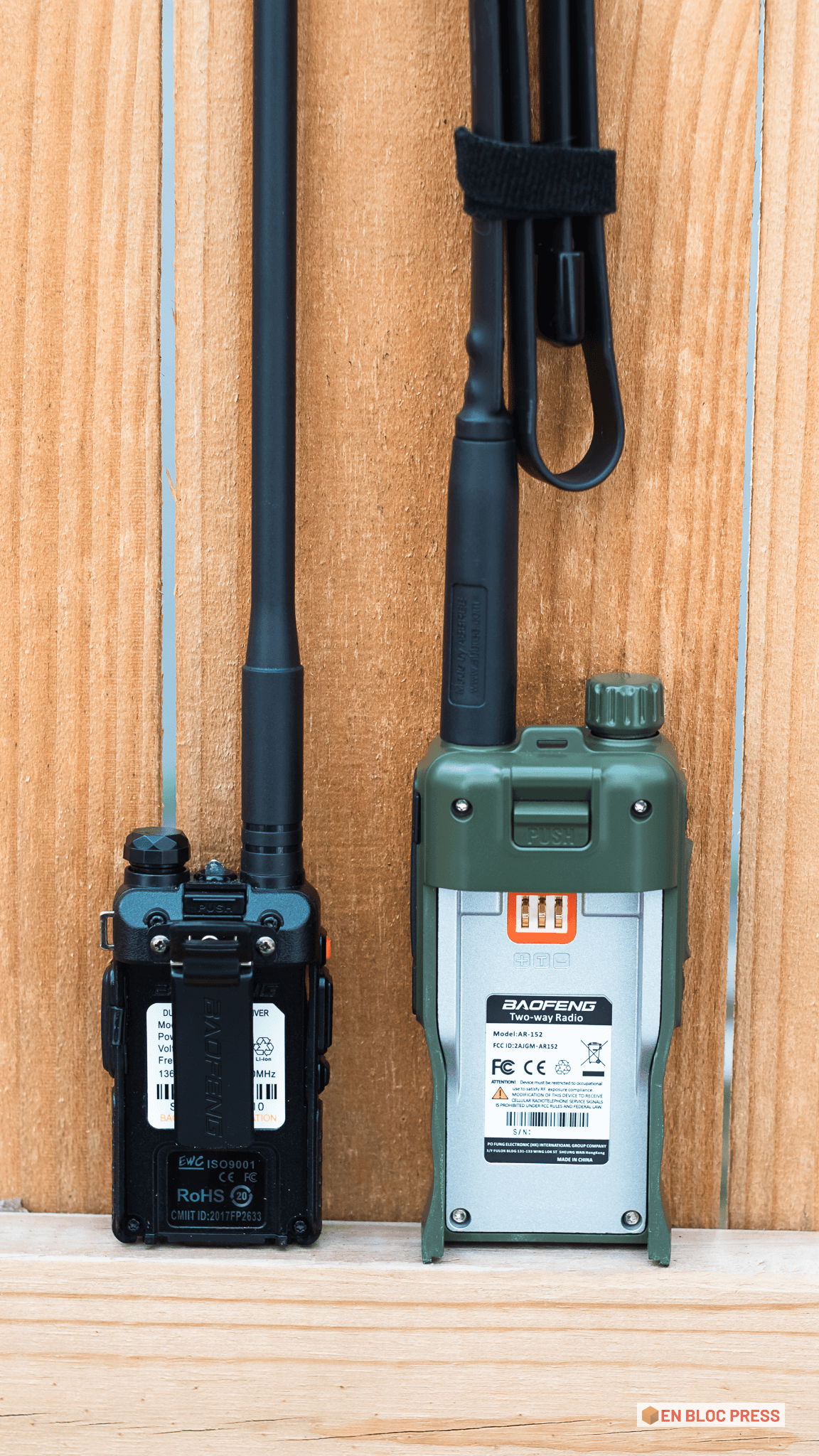
It's notably larger than the UV-5R 3800
Final Thoughts
Is the AR-152 worth the splurge for you? Maybe. I bought this radio because I wanted to be able to communicate with a specific person in my area, and my 8-watt radios would not reliably reach them with an on-radio antenna. We each purchased an AR-152, and we're now able to communicate. I'm happy with this.
The construction quality of the AR-152 is definitely better than other Baofeng radios, and the extra power is nice. The radio also looks cool. But at $70, it's outside of the 'I don't care if it breaks' price range.
The size of this radio is appropriate for a chest rig or plate carrier, but it's a bit hefty to just clip onto your belt or shoulder strap if you're camping or hiking. I don't have anything bad to say about the quality or function of the radio. In fact, it looks and feels great. For me, it's money well spent. But unless you specifically want the extra power or military aesthetic (which I do), the cheaper Baofengs may be a more efficient use of money.
I currently have a handful of the cheaper UV-5R and UV-9R radios and only one of the AR-152 radios. I will probably add another AR-152 to the mix, but I don't plan on upgrading across the board.
The AR-152 would not be the best choice for casual use, where having a large, military-style radio would seem out of place. If you need a radio to coordinate a sack race for an afterschool event, you're going to look like a weird prepper guy showing up with an AR-152.
But if you want a handheld radio with plenty of power and actually decent build quality (minus being waterproof), the AR-152 is a solid pick. These radios are also an excellent platform from which to get into building your own antennas and/or transmitting data packets via tablet.
If you're been meaning to get just-in-case radios, the AR-152 is a good choice for someone willing to spend a little extra compared to the other Baofengs.

If you're interested in radios, I would suggest NC Scout's The Guerrilla's Guide To The Baofeng Radio. This is basically a book version of a military crash course on being an RTO. It's a great resource on its own, but it's also good because if the lights really do go out one day, it contains a lot of information you'll want to reference if the internet is down.
See you all next time,
-Lee
Disclosures: I have no financial relationship with Amazon, Baofeng, NC Scout, or anything listed in this article.




